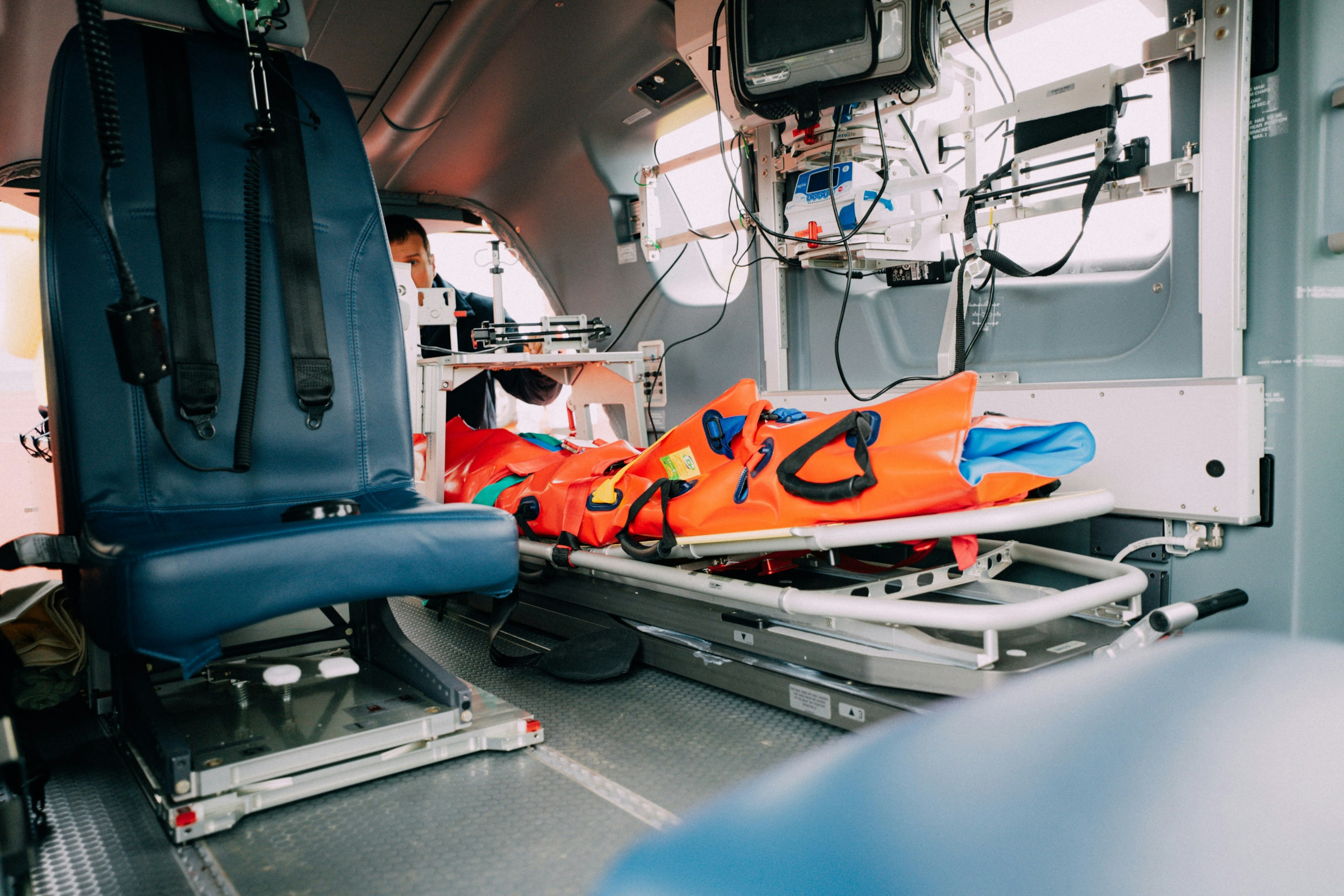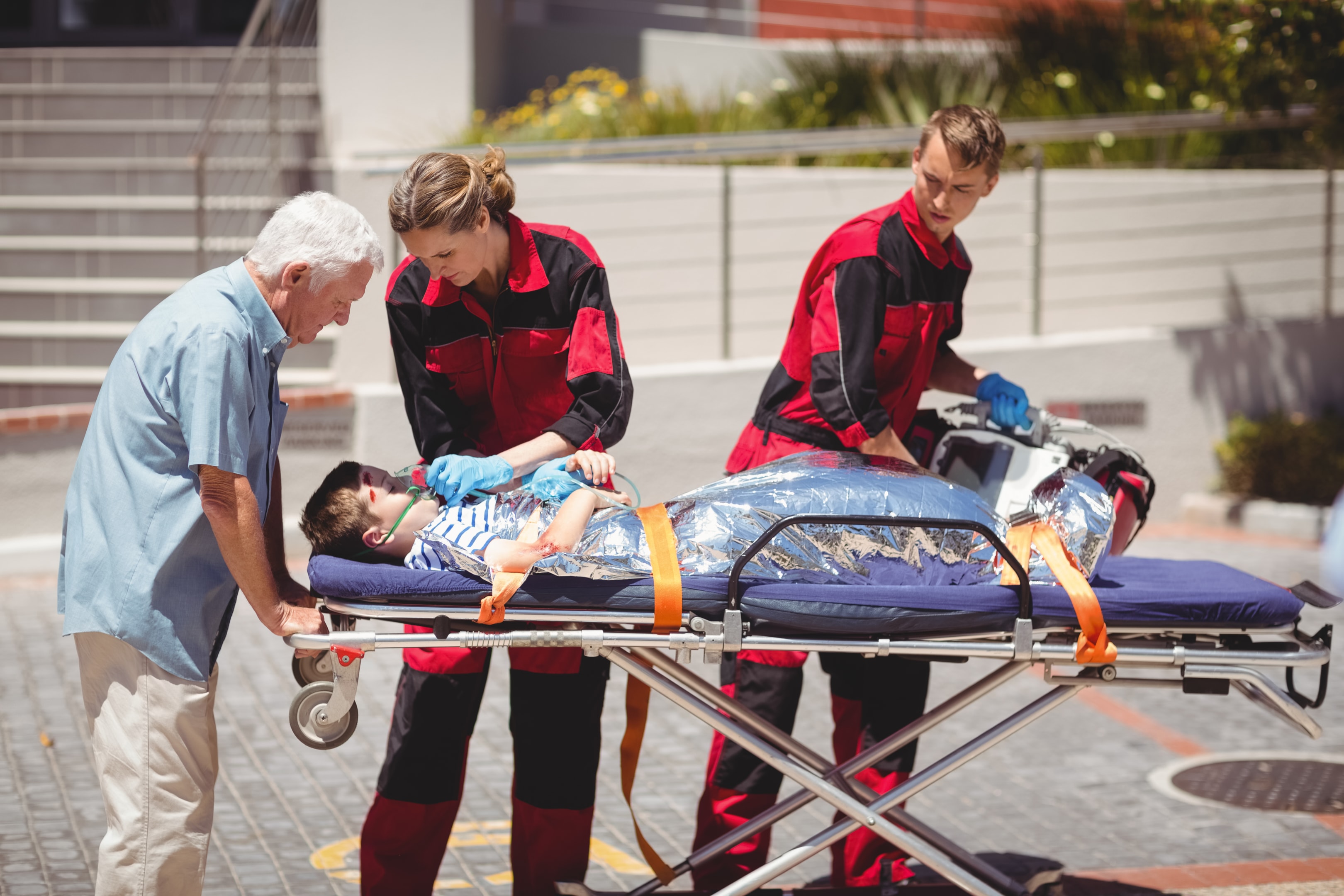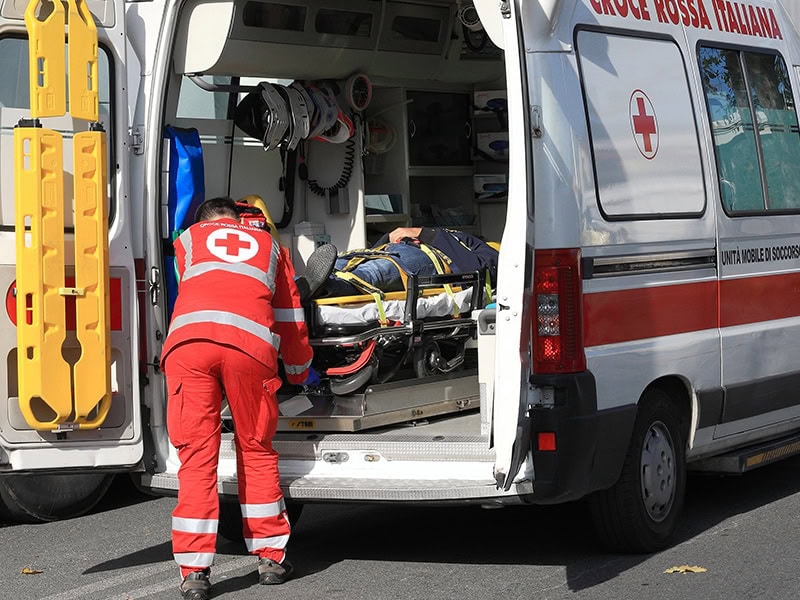Introduction
Ambulance stretchers are indispensable tools in emergency medical services (EMS). They ensure safe and efficient patient transport. From preventing further injuries to helping EMS teams work quickly under pressure, the right stretcher can make all the difference in critical moments. Choosing the right stretcher isn’t just about functionality but reliability, ease of use, and patient care when needed most.
This guide will walk you through the key considerations—like weight capacity, safety features, and stretcher types—to help you make an informed and practical decision tailored to your specific needs.
What is an Ambulance Stretcher?
An ambulance stretcher is a device used in emergency medical services (EMS) to transport patients to medical facilities or during emergency evacuations. It ensures stability and secure patient handling throughout the process.

Key Considerations When Buying a Stretcher
Weight and Portability
When selecting an ambulance stretcher, it’s essential to balance weight and durability. Lightweight stretchers, such as folding models, typically weigh around 9-18 kg (20-40 lbs.) and can support up to 159 kg (350 lbs.), making them easy to maneuver and ideal for quick deployments. These stretchers are especially useful when paramedics need to move patients in tight or crowded spaces or when time is of the essence. Although lighter stretchers are quicker to handle and less stressful for EMS personnel, their load capacity may be limited.
On the other hand, heavier, more robust stretchers offer greater stability and are suitable for patients requiring additional support. These models can weigh around 23-32 kg (50-70 lbs.) and support users up to 295 kg (650 lbs.). They are generally more durable and provide a smoother ride for critically ill patients. However, while heavier stretchers are stronger and more durable, they can be harder to maneuver and may take up more space in the vehicle, affecting its weight balance and potentially making it harder to fit other equipment.
It’s also important to consider the stretcher’s compatibility with the ambulance’s loading system. A cot that is too heavy or poorly balanced can cause issues during loading and unloading, potentially delaying response times or compromising safety.

Safety Features
When selecting a stretcher, it’s also essential to focus on features that ensure patient stability and security like:
- Side rails provide lateral support, preventing the patient from rolling off the board during transport.
- Safety belts lock the patient to the gurney, minimizing movement and reducing the risk of injury.
- Head immobilizers stabilize the head and neck, crucial for individuals with potential spinal injuries.
- Shock-absorbing features, such as padded mattresses and suspension systems, help minimize the impact of bumps and jolts during mobility.
Equally important is ensuring that the stretcher complies with relevant safety standards and regulations. In the United States, the FDA classifies wheeled stretchers under 21 CFR 880.6910, which outlines specific design and performance requirements.
Additionally, organizations like the Society of Automotive Engineers (SAE) have developed standards, such as SAE J3026, which requires all seating, including stretcher, to be crash-tested with a crash test dummy.
Durability and Materials
When choosing a stretcher, the materials used in its construction are crucial as they affect durability, weight, and suitability for emergencies. Aluminum alloys are lightweight yet strong, offering excellent corrosion resistance when exposed to moisture and chemicals. Stainless steel provides exceptional strength and durability for rigorous use but is heavier, potentially impacting portability. Composite materials like carbon fiber provide a balance between strength and weight, making them durable and easy to handle, but they can be more expensive compared to other materials.
When buying a stretcher, consider materials designed for emergency settings like frequent use, bumpy roads, and unpredictable weather. Stainless steel and heavy-duty plastics are durable materials for such demanding conditions. Additionally, corrosion-resistant surfaces are crucial for maintaining hygiene and ensuring longevity in harsh environments.
Ease of Use
When choosing a stretcher, prioritize ease of use to enhance efficiency and reduce strain on paramedics.
- Look for features like adjustable height mechanisms, which allow for easier patient transfers and accommodate various medical procedures.
- Easy folding capabilities are essential for quick storage and deployment, saving valuable time during emergencies.
- Ensure the cot has a reliable lock system to secure it during transfer, preventing accidental movements. The lock should be simple to engage and disengage, ensuring stability throughout the journey.
- Wheeled bases with smooth-rolling casters improve maneuverability, allowing paramedics to navigate tight spaces effortlessly.
- Hydraulic lift systems can further reduce physical strain by enabling easy elevation adjustments with minimal effort.
- Some stretchers also feature adjustable legs support for added flexibility.
- Urban fire departments often have bariatric equipment to assist heavier individuals.
Different Types of Ambulance Stretchers and Their Uses
1. Functional Differences
Manual Stretcher
- Operation: Adjusted manually for height, angle, and folding.
- Use Case: Basic emergency needs, suitable for budget-conscious organizations.
- Features: Simple design offering high adaptability.
- Drawback: Requires more manpower, leading to greater physical strain on rescuers.
Electric Stretcher
- Operation: Uses electric power for lifting and adjustments.
- Use Case: Suited for high-demand, intensive rescue operations.
- Features: User-friendly operation that significantly boosts rescue efficiency.
- Drawback: Higher cost, requires regular charging and maintenance.
Automatic Stretcher
- Operation: One-button operation for loading unloading, and lifting.
- Use Case: Designed for advanced medical rescue services.
- Features: Easy to operate, further enhancing rescue efficiency.
- Drawback: Complex systems with higher maintenance costs.
Recent studies also indicate that transitioning from manual to automatic stretchers can reduce paramedic crew injuries by up to 78%, highlighting the importance of considering these advanced options for both user and rescuer protection.

2. Portability and Size
Foldable Stretcher
- Features: Lightweight, compact, and easy to store.
- Use Case: Ideal for outdoor rescues or tight spaces where portability is key.
- Drawback: Lower weight capacity and stability compared to more rigid stretchers.
Track Stretcher
- Features: Equipped with tracks for smooth transport over stairs, providing stability during vertical rescues.
- Use Case: Best for environments with multiple floors or stairs, like high-rise buildings or multi-story structures.
- Drawback: Heavier and bulkier, making it less portable for quick deployment or tight spaces.
3. Material and Structure
Aluminum Alloy Stretcher
- Pros: Lightweight, durable, and corrosion-resistant.
- Use Case: Suitable for general emergency environments where ease of movement is essential.
- Cons: Generally more expensive than other materials.
Steel Stretcher
- Pros: Offers higher strength and durability, capable of supporting heavier users.
- Use Case: Ideal for transporting users who are overweight or require additional support.
- Cons: Heavier and less portable, which can be challenging in certain rescue situations.
Plastic or Composite Stretcher
- Pros: Lightweight and waterproof, making them easy to clean and suitable for water rescues.
- Use Case: Best for water rescue operations or light-duty scenarios where portability is a priority.
- Cons: Generally less durable and may not support as much weight as metal stretchers.

Safety Standards and Regulatory Compliance
Ensuring that the gurney meets local and international safety standards is crucial for providing a complete solution for the user and paramedic’s security.
- In the United States, the Food and Drug Administration (FDA) regulations cover aspects such as design, performance, and labeling to ensure the devices are safe and effective for patient mobility.
- In Europe, ambulance stretchers must comply with the Medical Device Regulation (MDR) to obtain the CE mark, indicating conformity with health and environmental protection standards.
- The American National Standards Institute (ANSI) has also developed standards for various medical equipment including ambulance stretchers.
Quality assurance testing is also vital in the process. Stretchers undergo rigorous evaluations to confirm their durability, weight limit, and overall performance in emergency environments. These tests ensure that the cot can withstand frequent use, heavy loads, and various emergency conditions, making it a reliable tool for the medical crew.
Cost Considerations and Budgeting for a Stretcher
When budgeting for ambulance stretchers, consider both the initial cost and long-term value. Basic manual stretchers usually cost from $100 to $1500, which is suitable for budget-conscious organizations. Electric or automatic stretchers range from $2,000 to $6,000, offering enhanced features like reduced physical strain and better maneuverability. High-end powered stretchers with advanced hydraulic systems can go beyond $6,000. High-end models, such as the Stryker Power-PRO XT, can be priced at $10,995 or more. Additionally, the Stryker M1 Stretcher unit is another popular option with excellent features.
To save cost, prioritize purchasing durable, long-lasting models that require minimal maintenance. Shop for stretchers with reliable warranties and quality assurance testing to ensure a complete solution for your needs. Consider how frequently each gurney will be used, as well as its required features, like carrying capacity or ease of maneuverability, to avoid overspending money on unnecessary features.
If your medical service has a limited budget, it might be helpful to shop for a few specialized models for critical situations and supplement them with more basic stretchers for general use. Stryker is a cost-efficient and reliable brand among many customers.
Conclusion
Choosing the right stretcher is more than just a purchase—it’s a critical decision that impacts the patient well-being, comfort, and efficiency of both users and medical teams. When lives are on the line, the stretcher you rely on needs to be durable, easy to use, and equipped with features that enhance stability.
Factors like weight, mobility, safety features, and compliance with safety standards by organizations like the FDA should guide your decision. Every emergency service has different needs, so it’s important to consider your specific requirements before making a choice. A well-selected stretcher can make all the difference in providing fast, efficient patient care while easing the physical strain on your team.
External Links
- FDA guidelines for ambulance stretchers: https://www.accessdata.fda.gov/scripts/cdrh/cfdocs/cfcfr/cfrsearch.cfm?fr=880.6910&utm
- NIH research on patient transport protection: https://pmc.ncbi.nlm.nih.gov/articles/PMC8118726/?utm
- CE guidelines: https://www.unhcr.org/lb/wp-content/uploads/sites/16/2024/10/Annex-A-2_Comprehensive-Medical-Ambulance.pdf?utm
- ANSI standards for ambulance equipment: https://webstore.ansi.org/standards/din/dinen18651999?srsltid=AfmBOopIS-zmPQlKPmLK2OiV64s98trwib8ZMSM3Jn6zYB1TuvgsftCW&utm
You can visit our page for a range of stretchers designed to fit your specific needs.
https://jiekangrescue.com/ambulance-stretcher/



